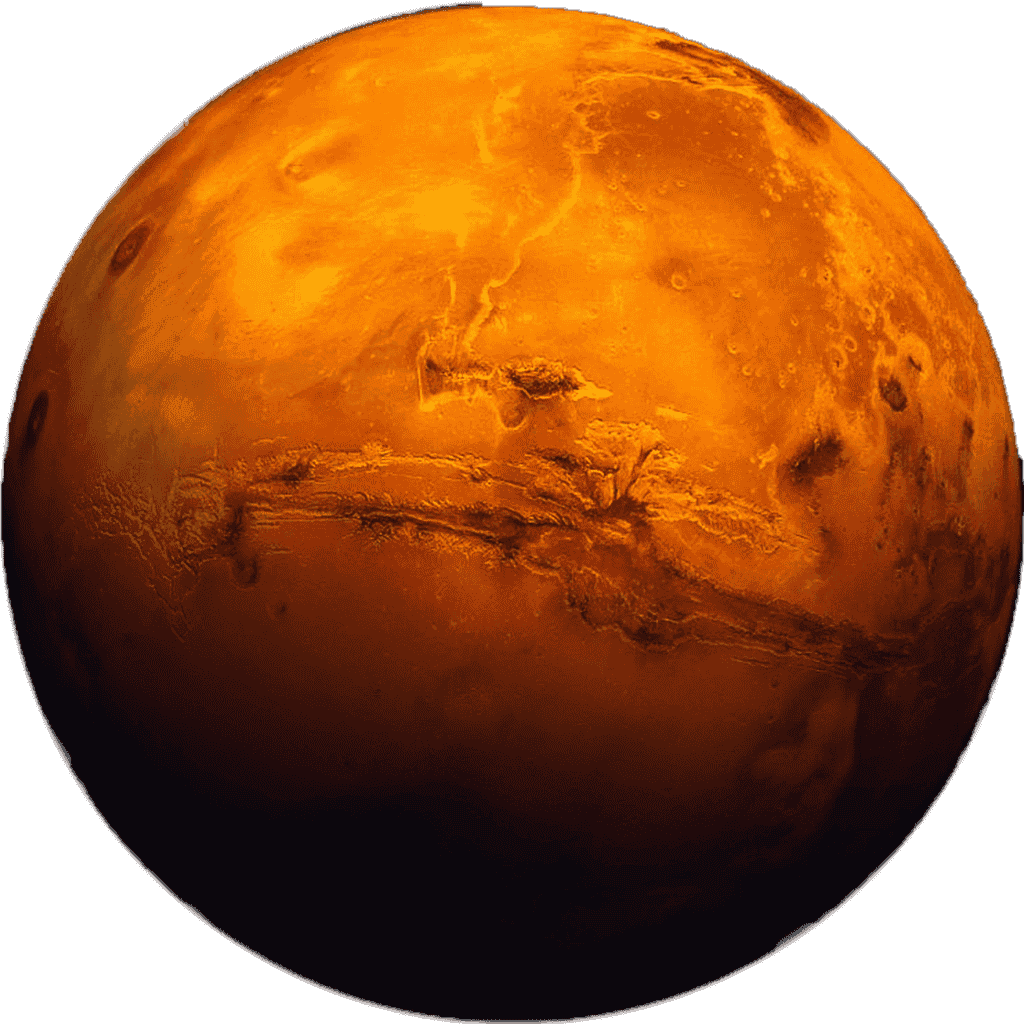Mars
Roman God of War
The Red Planet, known for its rusty iron oxide surface

Composition
Iron core, basaltic mantle, and iron oxide-rich crust
Atmosphere
95% carbon dioxide, 3% nitrogen, 2% argon
Cosmic Portrait
Mars: The Red Planet
Mars, the fourth planet from the Sun, is a world of stark beauty and scientific intrigue. Known as the Red Planet due to its iron oxide-rich soil, Mars has captivated astronomers and dreamers for centuries.
- Surface Features: Mars is home to Olympus Mons, the tallest volcano in the solar system, and Valles Marineris, a canyon system that dwarfs Earth's Grand Canyon.
- Ancient Water: Evidence of ancient riverbeds, deltas, and lakebeds suggests that Mars once had flowing liquid water, making it a prime candidate in the search for past life.
- Moons: Mars has two small, irregularly shaped moons, Phobos and Deimos, believed to be captured asteroids.
Climate & Atmosphere
The Martian atmosphere is thin and composed mostly of carbon dioxide, with surface temperatures ranging from a mild 20°C (68°F) during the day to a frigid -73°C (-99°F) at night. Massive dust storms can envelop the entire planet, sometimes lasting for weeks and obscuring the surface from view.
Exploration & Habitability
Robotic missions like NASA's Perseverance and Curiosity rovers are actively exploring Mars, searching for signs of ancient microbial life and studying its geology. The discovery of subsurface ice and seasonal methane emissions has fueled speculation about the planet's potential to support life, past or present.
Mars is a planetary time capsule, preserving clues to the early solar system and the tantalizing question: Was there ever life beyond Earth?
With its dramatic landscapes, challenging environment, and ongoing exploration, Mars stands as humanity's next frontier—a destination for future missions and perhaps, one day, human settlement.
Fun Fact
Mars has the largest volcano in the solar system - Olympus Mons is about 3 times taller than Mount Everest!